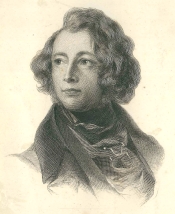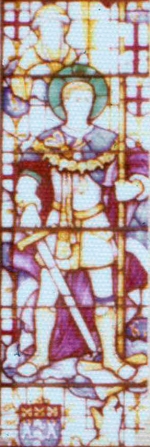 Charles Dickens first came to Southwark at the age of 12, when his parents and all the Dickens children except for Charles and his sister Fanny, were imprisoned at Marshalsea Debtors Prison for a £40 and 10 shillings debt owed to a local baker. Charles moved to nearby Lant street to be close to his family in the prison. His experiences of poverty as a child strongly influenced his writing and are found in descriptions and characters in many of his novels. He described many places in Southwark which he had known as a child and some are still recognisable today.
Charles Dickens first came to Southwark at the age of 12, when his parents and all the Dickens children except for Charles and his sister Fanny, were imprisoned at Marshalsea Debtors Prison for a £40 and 10 shillings debt owed to a local baker. Charles moved to nearby Lant street to be close to his family in the prison. His experiences of poverty as a child strongly influenced his writing and are found in descriptions and characters in many of his novels. He described many places in Southwark which he had known as a child and some are still recognisable today.
What remains of the high prison wall forms one side of a pathway which runs alongside Southwark’s John Harvard and Local History Libraries on Borough High Street.
A cast iron water pump stood in the courtyard of Marshalsea when Dickens’ family was imprisoned there in 1824. Charles must have passed this pump when visiting his family at the prison. It was donated to the Cuming Museum, after the prison building was demolished, in 1924.
 The museum’s collection also includes a key to Marshalsea prison with a label attached which reads: “The key of Marshalsea Prison. Given to S. W. by her father 1884. Where little Dorrit was born. Written by Charles Dickens.”
The museum’s collection also includes a key to Marshalsea prison with a label attached which reads: “The key of Marshalsea Prison. Given to S. W. by her father 1884. Where little Dorrit was born. Written by Charles Dickens.”
 Little Dorrit, one of Dickens characters from a novel of the same name, was indeed born in Marshalsea Prison, and was christened across the road at St George the Martyr church, built in 1734 and commonly known as ‘Little Dorrit’s Church’ . One night she returned to the prison too late and was locked out for the night so she slept in the vestry of the church with the register for a pillow. It was this same church in which she was married to Arthur Clennam, and in the bottom right-hand corner of the modern stained glass window at the east-end of the church is a representation of Little Dorrit wearing a poke hat.
Little Dorrit, one of Dickens characters from a novel of the same name, was indeed born in Marshalsea Prison, and was christened across the road at St George the Martyr church, built in 1734 and commonly known as ‘Little Dorrit’s Church’ . One night she returned to the prison too late and was locked out for the night so she slept in the vestry of the church with the register for a pillow. It was this same church in which she was married to Arthur Clennam, and in the bottom right-hand corner of the modern stained glass window at the east-end of the church is a representation of Little Dorrit wearing a poke hat.
This month we will be looking into some of Dickens’ old haunts in a series of blogs. If you want to wrap up warm and step out onto the streets yourself, you can download our app (for iPhone or Android), and let the narrator take you on a journey that unveils Dickens’ Southwark. You can also use the Literary Map to see where Dickens’ books (and those of other authors) relate to the streets of Southwark.


